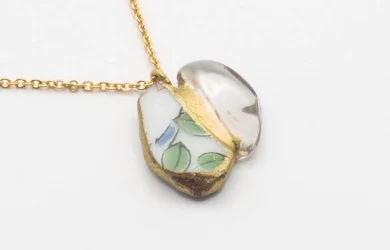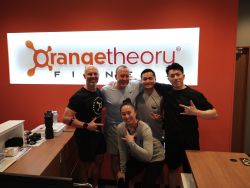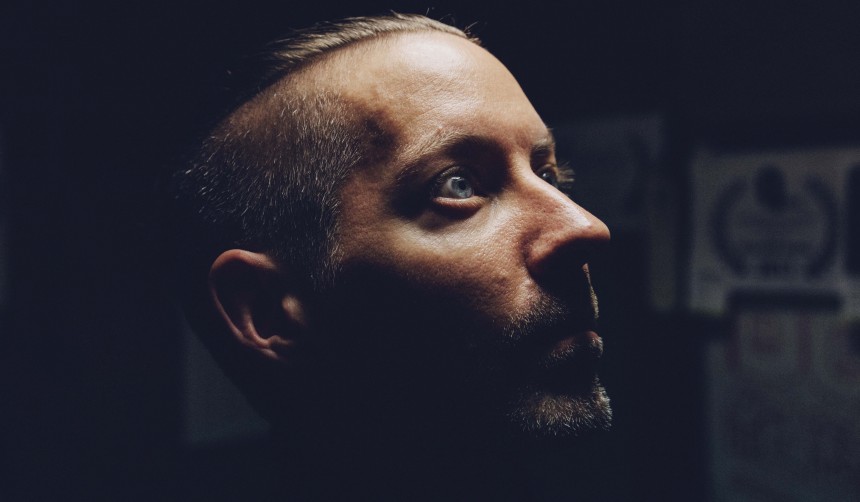
It was March 14th, 2011, and documentarian Ian Thomas Ash had already started filming. “My brother had called me and asked what I was doing,” Ash remembers. “I said, I don’t know. I’m a bit frozen. He told me, you’re a filmmaker— go out and film.” Just three days after the largest recorded earthquake in Japanese history, Ash took his camera out to the streets of Tokyo. His short films from this series — snapshots of everyday life post 3.11 — still live on YouTube. Collectively, they capture the unsettling normalcy of life in the immediate aftermath of the Tohoku triple disaster (earthquake, tsunami and nuclear meltdown), and will resonate with anyone who was here to feel the aftershocks.
There wasn’t a vision for the project those first few days, just a need to document that strange moment in time. People on film continue their daily routines while wearing face masks to protect themselves from radiation; panic-buying leaves store shelves empty of basic groceries; evenings are candle-lit in an effort to conserve energy and prevent further blackouts. Tokyo was a city that had, at once, physically felt the earth shift at a 9.0 magnitude, had emotionally felt the toll of the tsunami through the images populating TV screens, and had still felt so far from the tragedies plaguing lives up north. For Ash, the distance was too much.
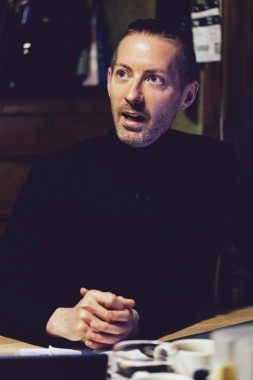
“I read an article that said children in Minamisoma [in Fukushima Prefecture] were living 20 to 30km away from the nuclear power plant.” Despite orders to stay indoors, there were no plans to evacuate these children. The government was simply busing them to school buildings just over the 30km line. Recalling his reaction to the news, Ash says, “There wasn’t so much judgement, as me just trying to understand what that meant.” He decided to find out on film.
An old collaborator and cameraman from the UK flew into Narita just as flights out were booked solid for days, and together they drove north to Minamisoma, a city just outside the exclusion zone. Their second day, still unsure of what this film was or would become, they stopped at a nearby gas station. Ash noticed an elderly woman standing in the rain. “I asked her if she was concerned about [the radiation]. She said, I’m not concerned about me but I’m concerned about my grandkids.” After a brief conversation, the woman invited them inside to meet her son (a father of four). He, in turn, invited Ash and his cameraman to stay with the family and see for themselves what life was like for his children. It all happened in less than ten minutes. They moved into the family’s home that evening.
The homestay that followed produced footage and built relationships that were the basis for two documentaries on the children of Fukushima, the American-born director’s first features shot entirely in Japanese. In the Grey Zone (2012) follows the children of Minamisoma as they return to school. A2-B-C (2013) profiles a group of mothers eighteen months after the nuclear meltdown. They fight for bureaucratic transparency and radioactive decontamination in homes and schools after discovering that their children have developed thyroid cysts and other medical symptoms of radiation exposure. A2 is a medical category that designates the presence of thyroid cysts. Ash himself describes the film as, at times, angry. It poses questions about the dangers of nuclear energy and the need for government accountability. It is this award-winning feature — and its subsequent controversies — that made Ash’s name in Japan and internationally.
Ash’s chance encounter in that gas station is a striking origin to his cinematic relationship with the people of Fukushima. The project has now occupied six years of his life. As the effects of radiation on residents continue to come into focus, Ash has gone back to film repeatedly. He’s even shot an unreleased third film on the subject.

I asked him about that second day in Minamisoma. How had he managed to build so much trust with that family — strangers —in just ten minutes? “That’s like asking how do you make friends? I don’t know, you don’t be an asshole,” Ash says with a laugh before answering more seriously. “First, everyone wants to be listened to. Everyone wants to share their story. If they believe you’re the person who can do that in an honest and respectful way…I think everyone wants to feel like they’ve been listened to.”
It is with an eye for intimate storytelling and empathy towards his subjects that Ash has continued to direct documentary films in Japanese. His 2014 film -1287 records the last four years of his friend Kazuko’s life as she slowly dies from breast cancer. Recently, Ash began directing short-form documentaries for NHK World’s Inside Lens series, which highlights the work of filmmakers in Asia. He is currently extending his NHK piece on hospice-care workers in rural Japan into a feature release. Dying at Home was the first time the network had aired images of a dead person that wasn’t archival footage. “I went to bat for that. I was ready to walk away from [the project].” Still, Ash says the full-length film will be “less TV.”
Everyone wants to feel like they’ve been listened to.
Whatever the medium or subject, Ash says all of his work follows a general theme: “It’s either about health and medicine or death and dying.” This filmmaking niche has created opportunities to travel the world on the festival circuit and landed him a position at Tokyo University where he’s currently teaching a seminar on the ethics of oral histories. However, he is quick to point out that prominence in the Japanese documentary world brings little fame or fortune. “To be honest, it’s not the money. There is no money. It feels good to know what you’re doing is getting out there and affecting people.”
I met Ash in his studio, down a narrow alley in the shitamachi neighborhood of Oji-Kamiya. As filmmaking studios go, Ash has embraced the dilapidated bohemian look; a broken shoji, mismatched curtains and light water stains give the place a worn and weary charm. Ash likes it that way. He converted the modest Showa-era residence into a home-base for editing and producing his films, also hosting a rotation of filmmakers who crash on his tatami mats during shoots. It’s far from glamorous, but the walls lined with posters of upcoming festival screenings around the world—Argentina, Germany, Ecuador, Slovenia and many more—keep him motivated.
The wall of laurels is also an impromptu screening calendar for his most recent project, Boys for Sale (2017). The film examines the life of urisen (rent boys) in Shinjuku Nichome, Tokyo’s gay district. The boys themselves, many who identify as straight, narrate the film by discussing their experiences in sex work on camera. After over a decade directing films, Boys for Sale is the first time Ash has handed over the directing reins to someone else, in this case Japanese filmmaker Itako. He’s credited as an executive producer, but he was also actively involved in research and filming. “It’s so unlike any film I’ve done before,” he says, citing Itako’s strong vision for the project.
All the current “rent boys” are interviewed in the sex rooms where they work. In the place of a classic black bar or “mobster silhouette,” the filmmakers decided to disguise the identity of some interviewees using masquerade masks. It brings an elegance and opulence to the subjects, when it would be so easy to strip them of those qualities. The film also frequently switches to animated scenes when depicting graphic moments between the boys and their clients, “We wanted to illustrate what was happening without editorializing it.”
Boys for Sale is not only a departure for Ash stylistically, it has also opened his work up to a new leg of the festival circuit. After their cold submission was selected by Los Angeles’ Outfest—the largest LGBTQ film festival in the world — Boys for Sale has screened at dozens of queer film events across the world. Despite its success, you’ll be hard-pressed to find a Japanese festival date among the posters that frame Ash’s studio. “We have submitted to several festivals in Japan. It has not been accepted. I don’t know the reason why,” Ash admits. The film was even rejected from the Tokyo Gay and Lesbian Film Festival, a decision that hit especially hard considering its success at similar events abroad. Boys for Sale instead found its Japan premiere at a November 26th event for Tokyo AIDS Week. The film, which touches on the shortcomings of Japanese sex education, will be screened in conjunction with a panel on sexual health. “It’s not the Japan premiere we had once envisioned, but as an activist it’s an important event and I think it’s really amazing.”
This is not the first time Ash has had difficulty screening his work domestically. His award-winning film -1287 has never been screened in Japan. “I had a distributor tell me this film should not be screened. You should put it in a box and keep it for yourself,” Ash remembers, exasperated by the memory alone. “Can you imagine, this is one of my kids that I’ve put out into the world and they’re like you should put it in a box and chain it up and never let it see the light of day.”
Even his breakthrough A2-B-C has a troubled history in Japan. “I had to reverse import that. I had to spend a year and a half away from Japan promoting the film to be able to bring that back.” The film’s vocal criticism of government officials and spotlight on the environmental dangers of nuclear energy were no doubt contributors. After he finally secured a Japanese distributor, the company withdrew “unceremoniously,” as Ash puts. They pulled out after learning an individual and a medical clinic featured in the film were associated with the revolutionary communist group Chūkaku-ha. Ash says he’s currently not able to speak in-depth about the issue due to a non-disclosure agreement. In a 2015 press conference at the Foreign Correspondents Club of Japan, however, he noted, “If there’s a communist in the film…it doesn’t negate the fact that there are children in Fukushima whose parents are concerned about their health.” Citing the move as symptomatic of censorship and self-censorship in Japan around Fukushima, Ash published a photo online covering his mouth with “censorship” written on his forearms in English and Japanese. The photo went viral, at least in the virtual circles of Japanese independent film.
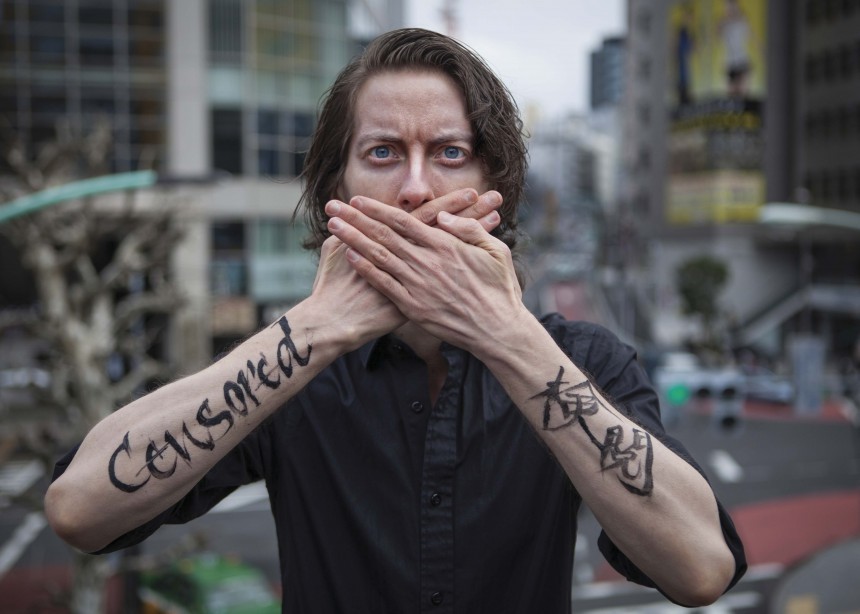
I ask him at one point if, after bringing stories of Japanese lives to film festivals across the world, he sees himself as an ambassador for Japan. The question is met with a visible cringe. He immediately pulls up some old promotional materials on his desktop from A2-B-C. The banner of the poster reads in Japanese: “Fukushima told through the lens of an American filmmaker who lives in Japan.” “How reductive. I hate that,” comments Ash, with a few expletives thrown in. The need for festival selection committees, press outlets and even audiences to constantly process his work through his nation of origin seems to get under his skin.
“When I direct a film like A2-B-C, it’s in Japanese directly without a translator. In the Japanese language, in Japan, with Japanese money,” says Ash, implying that despite checking all these boxes the designation of “Japanese film” remains elusive. “I’m not ‘American,’ in the sense that when I show my films in America they show as subtitled foreign films. I would never qualify for an American director award…When I screen here, they present it as a gaijin who makes the film.” The back and forth leaves Ash caught in the liminal. He argues that while a Hollywood film is a Hollywood film no matter who directs, his productions in Japan get the foreign treatment from everyone. “It’s very frustrating.”
After our tangent on the issue, I see Ash flash-forward to this article’s headline — “Filmmaking Nomad: Ian Thomas Ash is Homeless” — and a comments section lambasting the white gaijin who thinks he’s got it rough. He clarifies, “I wouldn’t want it to come across as…another gaijin talking about how Japanese they are. Cause that isn’t what I’m talking about.” Instead he directs the conversation towards something closer to belonging.
“My home is not here. I realized that when I got stopped in Ikebukuro the other day by four cops who literally body-searched me and searched my entire bag…But it takes something like that for me to realize that I’m never really going to belong here.” He doesn’t bring the thought back to his films, instead jokingly commenting that he needs therapy. But extending that sentiment from the personal to the professional, perhaps all Ash wants is for his work to have a home in Japan, even if he cannot.
